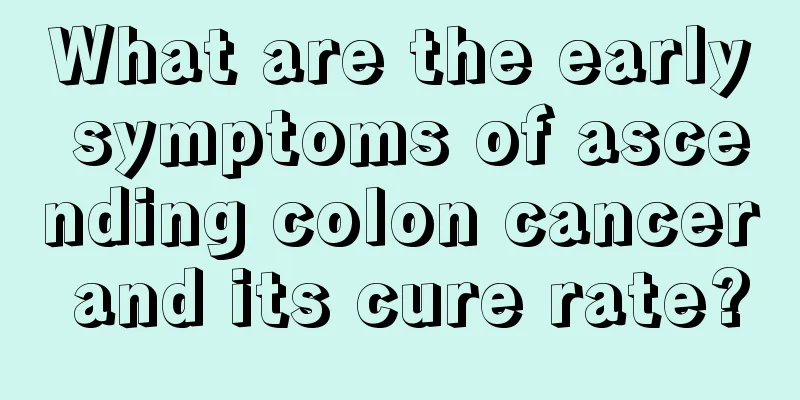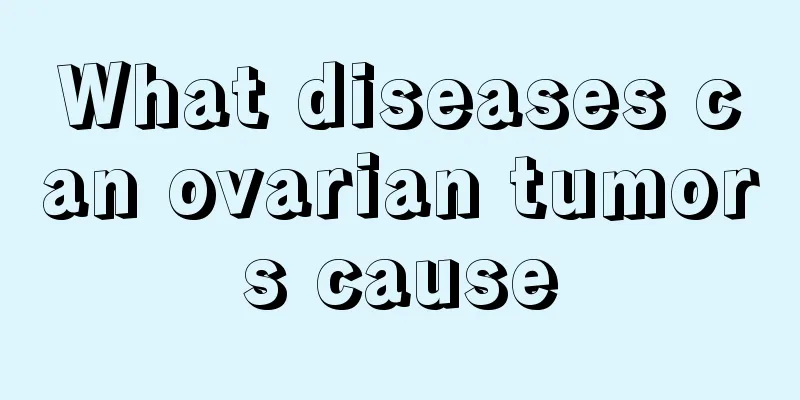What are the early symptoms of ascending colon cancer and its cure rate?

|
Early symptoms of ascending colon cancer: 1 Early symptoms In the early stages of ascending colon cancer, there will be symptoms such as abdominal distension and indigestion, followed by changes in bowel habits, diarrhea or constipation, and mucus stools or mucus-purulent bloody stools. 2Symptoms of poisoning Due to blood loss and toxin absorption from tumor ulceration, patients often experience anemia, low fever, fatigue, weight loss, edema and other symptoms, especially anemia and weight loss. 3. Symptoms of intestinal obstruction Symptoms of incomplete or complete low intestinal obstruction include abdominal distension, abdominal pain or cramps, constipation or constipation. Physical examination shows abdominal distension, intestinal type, local tenderness, and strong bowel sounds. 4Abdominal mass It is a tumor or a mass that has infiltrated and adhered to the omentum and surrounding tissues. It is hard and irregular in shape. Some of them can have a certain degree of mobility along the intestinal tract. In the late stage, the tumor infiltration is more severe and the mass may be fixed. 5 Late manifestations There are signs of liver metastasis such as jaundice, ascites, edema, as well as cachexia, a mass in the anterior rectal fossa, and enlarged supraclavicular lymph nodes, which are manifestations of distant tumor spread and metastasis. Treatment of ascending colon cancer: 1. Surgical method Right hemicolectomy It is suitable for cancers of the cecum, ascending colon, and hepatic flexure of the colon. For cancers of the cecum and ascending colon, the resection range includes the right hemi-transverse colon, ascending colon, cecum, and the 15-20 cm long terminal ileum, with end-to-end or end-to-side anastomosis of the ileum and transverse colon. For cancer of the hepatic flexure of the colon, in addition to the above range, the lymph nodes of the transverse colon and right gastroepiploic artery group must be removed. When performing radical resection of right hemicolectomy, attention must be paid to damage to the right ureter and descending part of the duodenum, especially when the tumor is large. 2. Chemotherapy The purpose of chemotherapy is to kill cancer cells and subclinical micro-metastases in the patient's blood, which can prevent local recurrence and metastasis after surgery. The main routes of administration are intravenous chemotherapy, as well as local perfusion through the anus, artery, and intracavitary administration. Intravenous chemotherapy is commonly used. |
<<: What is the first stage chemotherapy for nasopharyngeal carcinoma like and how to care for it
>>: Will brain cancer cause scalp itching
Recommend
Dizziness after treatment of nasopharyngeal carcinoma
Dizziness after nasopharyngeal cancer treatment 1...
What can I eat to lighten melasma?
There is an old Chinese saying that "medicin...
The efficacy of external application of Purslane
Purslane is a very common wild vegetable. You can...
Having this on your head can actually cause leukemia
Leukemia is a very common disease. Nowadays, many...
What to do if you have nosebleeds due to liver cancer? Pay attention to these points
After getting cancer, many patients will become d...
Do snails enhance male sexual function?
The nutritional value of field snails is very hig...
What are the more obvious signs of gastric cancer
The most obvious signs of stomach cancer usually ...
What are the symptoms of rheumatic diseases?
Rheumatic diseases are common clinical diseases. ...
What should be paid attention to when treating lung cancer? How to treat lung cancer in life?
What should we pay attention to when treating lun...
Lumbar vertebral marginal bone hyperplasia
Many elderly people experience bone hyperplasia i...
What's wrong with my eyebrows turning white? What's wrong with my eyebrows turning white?
The main reason for hair graying is due to aging,...
Can sprouted potatoes be eaten?
Potatoes, I think there are few children who don’...
Reasons for napping
Many people agree with the saying that people fee...
Measures to prevent knee cracking when flexing and extending the leg
When doing warm-up exercises, some people's k...
Do grasshoppers have parasites?
The crawling cicada is also called cicada. When i...









